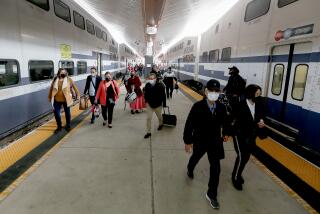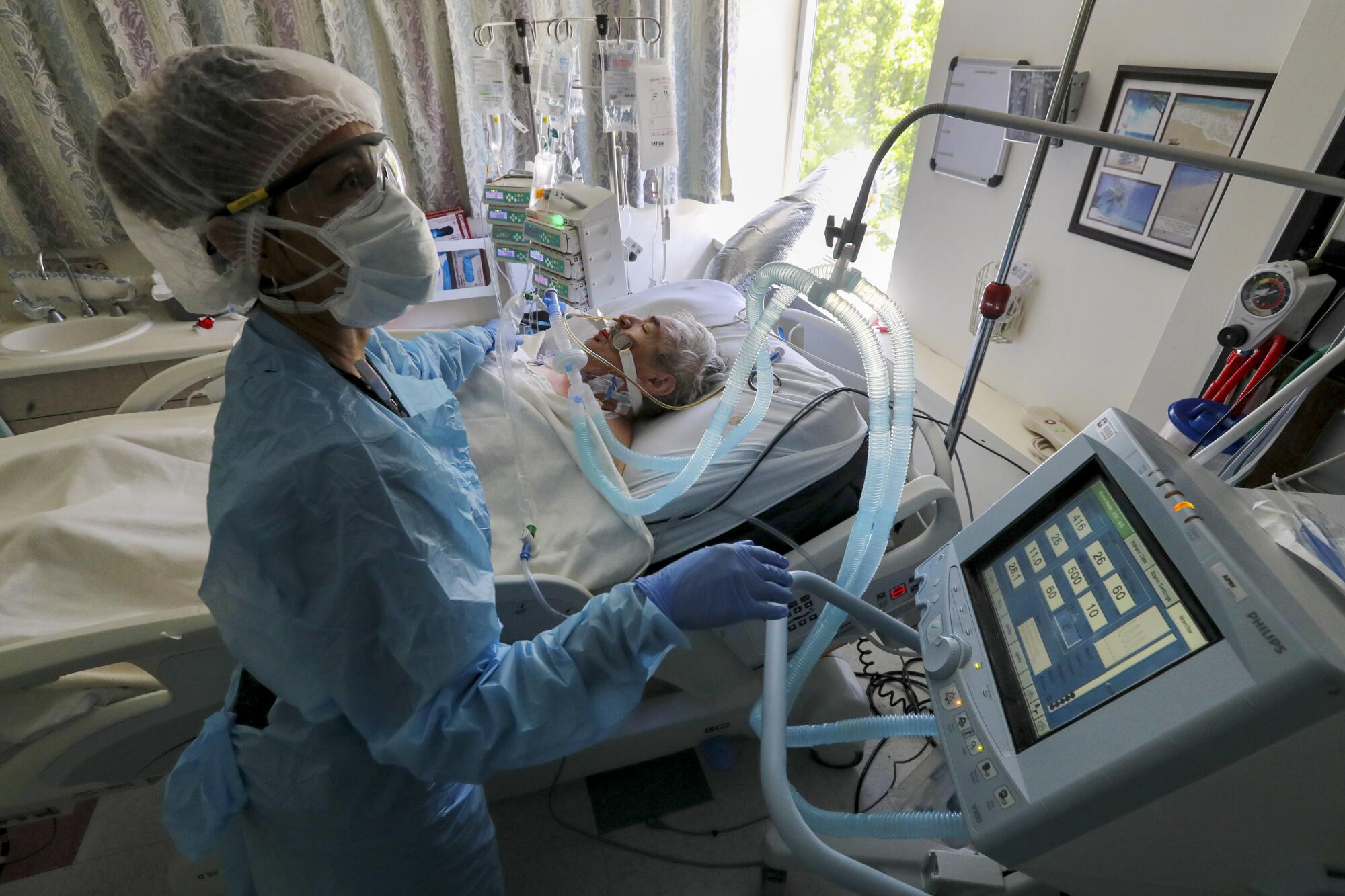
- Share via
EL CENTRO, Calif. — In all of their 47 years of marriage, Pedro and Patricia Luera had never been apart. Even now, in sickness, they were together.
The couple had tested positive for COVID-19. They were feverish, weak and struggling to breathe.
On July 2, a day after his wife had been admitted, 68-year-old Pedro Luera walked into the emergency room of El Centro Regional Medical Center, one of two hospitals serving Imperial County, a rural and impoverished region of about 180,000 people.
A surge in COVID-19 cases had put a strain on the hospital. It was running out of ventilators and intensive care unit beds almost every day, forcing it to send patients to other hospitals.
Soon, the Lueras would be at Paradise Valley Hospital in San Diego County, hooked up to breathing machines.
Before his father was sedated and intubated, Luera’s son, Pedro Jr., exhorted his father to hang tough.
“You’re strong. There’s still a lot of things you need to do,” he told him. “You’re going to come out of this. Be strong.”
His father croaked out: “I’m going to fight.”
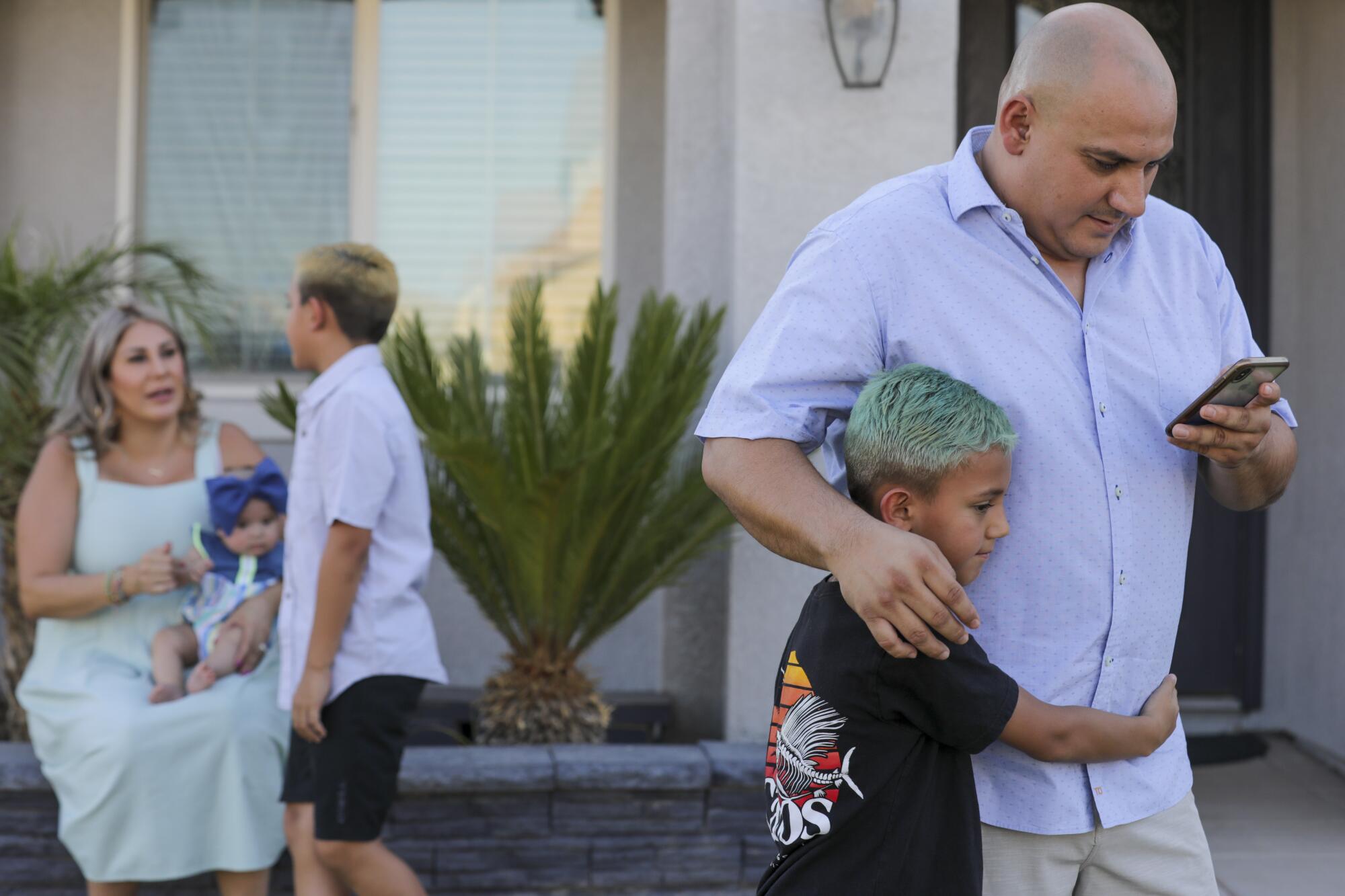
The pandemic has brought an unprecedented level of hardship for residents in a county where the coronavirus hardly feels like an abstraction. The high infection rates can make it feel like nearly everyone knows or knows of somebody who has contracted COVID-19 or died from it.
As most of California begins a second shutdown over the pandemic, no place has been hit as hard as Imperial County.
In the last two weeks, the county has averaged 688.1 infections per 100,000 people, compared with Los Angeles County’s 400.3. Its mortality rate is the highest in the state, averaging 25.5 deaths per 100,000 people — four times greater than L.A. County’s.
Imperial County was already at a disadvantage when the pandemic hit.
For years, the county led the state with the highest rates of diabetes, heart disease, asthma hospitalizations and obesity, high-risk factors that make people susceptible to catching COVID-19 and become severely ill or die.
“When you have a population with those preexisting conditions and you throw COVID-19 on top of it, you have a problem,” said Thomas Henderson, executive director of the Imperial County Medical Society.
Health experts say other factors contributed to the spread of the disease. The county lacked contact tracers. COVID-19 stigma led some residents not to alert others of their infection. Gatherings were also problematic as were residents traveling to and from neighboring counties, including those in Arizona.
The county’s two hospitals — El Centro Regional Medical Center and Pioneers Memorial Healthcare District — became so overwhelmed by the surge of cases that they were forced to move more than 500 patients to other California hospitals.
Two weeks ago, when El Centro Regional Medical Center ran out of ICU beds, Chief Executive Adolphe Edward said: “It’s horrible. I feel helpless.”
The pandemic also hit a region that was still struggling to recover from the last economic downturn. Even with a pandemic affecting many counties, its unemployment rate remains the highest in the state, according to the Employment Development Department.
“It’s no secret that prior to this pandemic the county was in dire need for resources. COVID-19 just came along to aggravate its situation.”
— Janette Angulo, director of the Imperial County Public Health Department
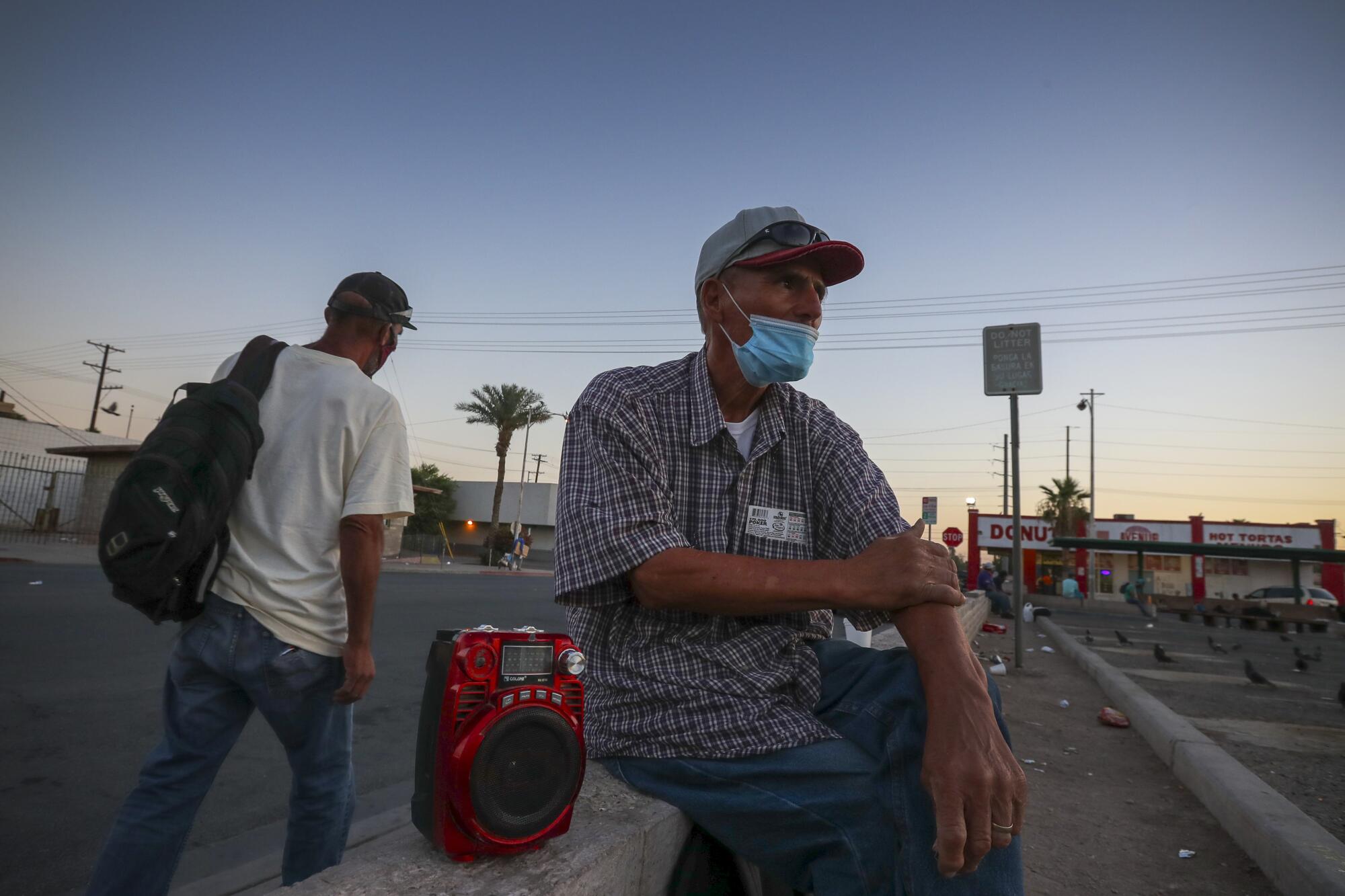
Early in July, on a hot morning in Calexico, Manuel Espinoso, 65, waited for work near a doughnut shop. The irrigation installer, who lives in Mexicali, Mexico, had gone a week without work. Agricultural jobs were drying up in the area because of the pandemic, he said.
In a good week, he could earn about $300 to help take care of his family. But lately, he hasn’t found any work, even as some job seekers in Mexico refuse to cross the border because they are afraid of becoming infected.
Espinoso has every reason to worry himself. In June, his 42-year-old daughter, the oldest of three, and her husband fell ill with COVID-19. She died.
“There wasn’t much I could do,” Espinoso said. “I worry more now about my other two daughters, and my wife. ... I don’t want to infect her.”
Even if he finds a much-needed job, he said the risks are high. Workers are often crammed together into vehicles as they go from one field to another. The situation isn’t any better in Mexico, he said.
“There’s a lot of infections over there,” Espinoso said.
But he said he has no choice: He has to work.
“You got to work until you can’t. You have to keep working,” Espinoso said. “What can you do when you’re doing it out of necessity?”
Nearby, Rudy Kim, 60, had just opened his discount store, Mi Manera.
He used a leaf blower to clean the sidewalk and turned on the radio to loudly play Spanish music for his mostly Latino clientele. A sign near the front read “No Mask, No Service.”
Kim said he has lost a lot of business because of the pandemic. With a new shutdown bearing down, he feared he might need to shut his store for good.
“It’s a ghost town,” he said. “Some days I’m only open for four hours.”
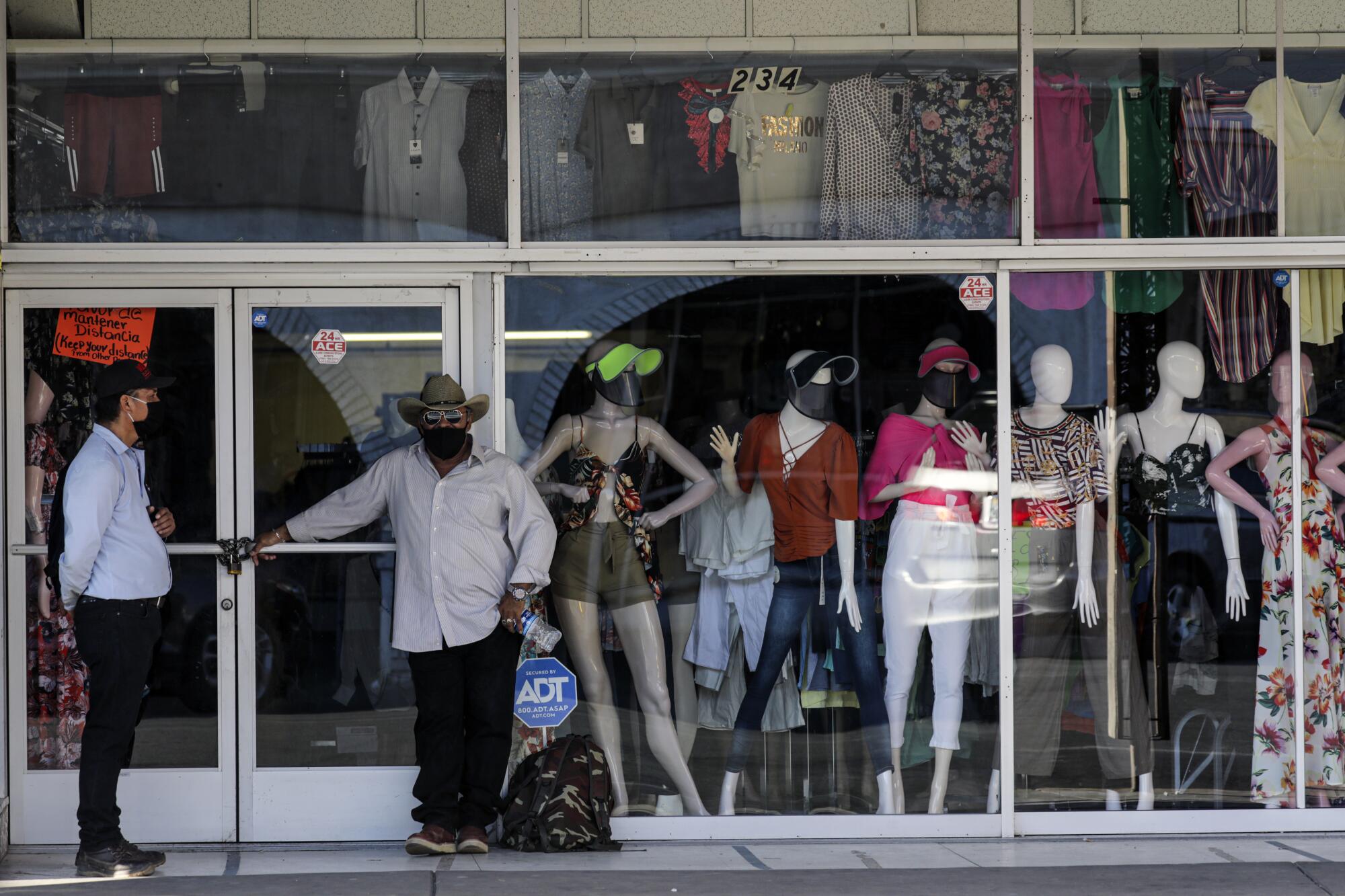
Kim had to lay off about 12 employees. He lost about $5,000 in April when he couldn’t open and sell Easter merchandise, which now sits in storage. But bad business or not, he still has to pay about $8,000 a month in rent.
“I’m very frustrated,” he said. “I cannot afford this anymore.”
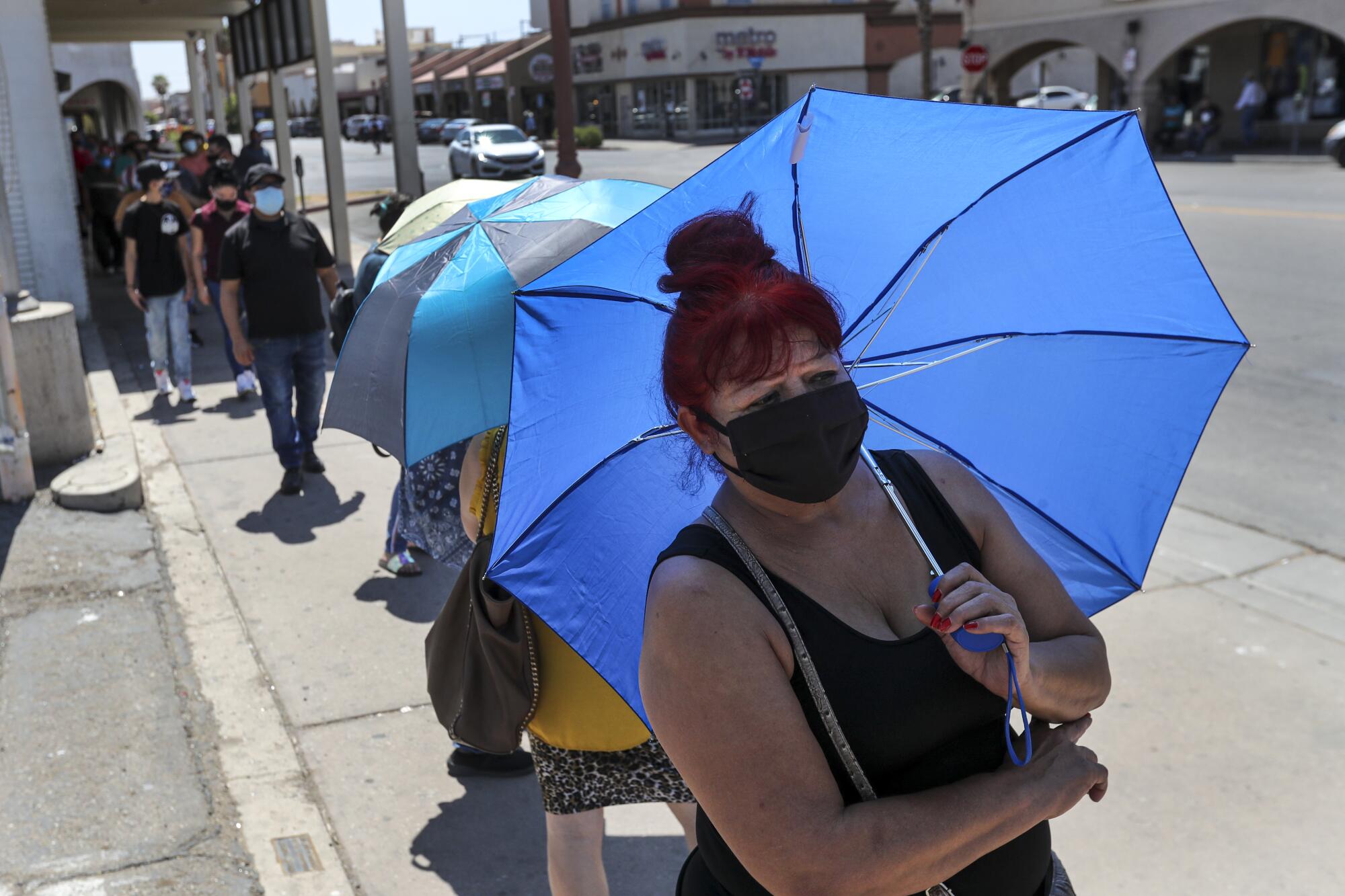
Nearby, more than 100 people were standing in line, waiting to pull out money from the ATM because there were few banks around. Many had filed for unemployment and were withdrawing money for rent.
A block away at Selecto Services, a line formed for a host of services, including unemployment and tax preparation.
Fernando Fausto, 59, a Mexicali resident with a green card who worked in the U.S., said he was there to file for unemployment but needed to prove he had paid taxes.
He said the company he worked for shut down in March. The field worker had been unable to find work.
“I need to pay bills and rent,” he said.
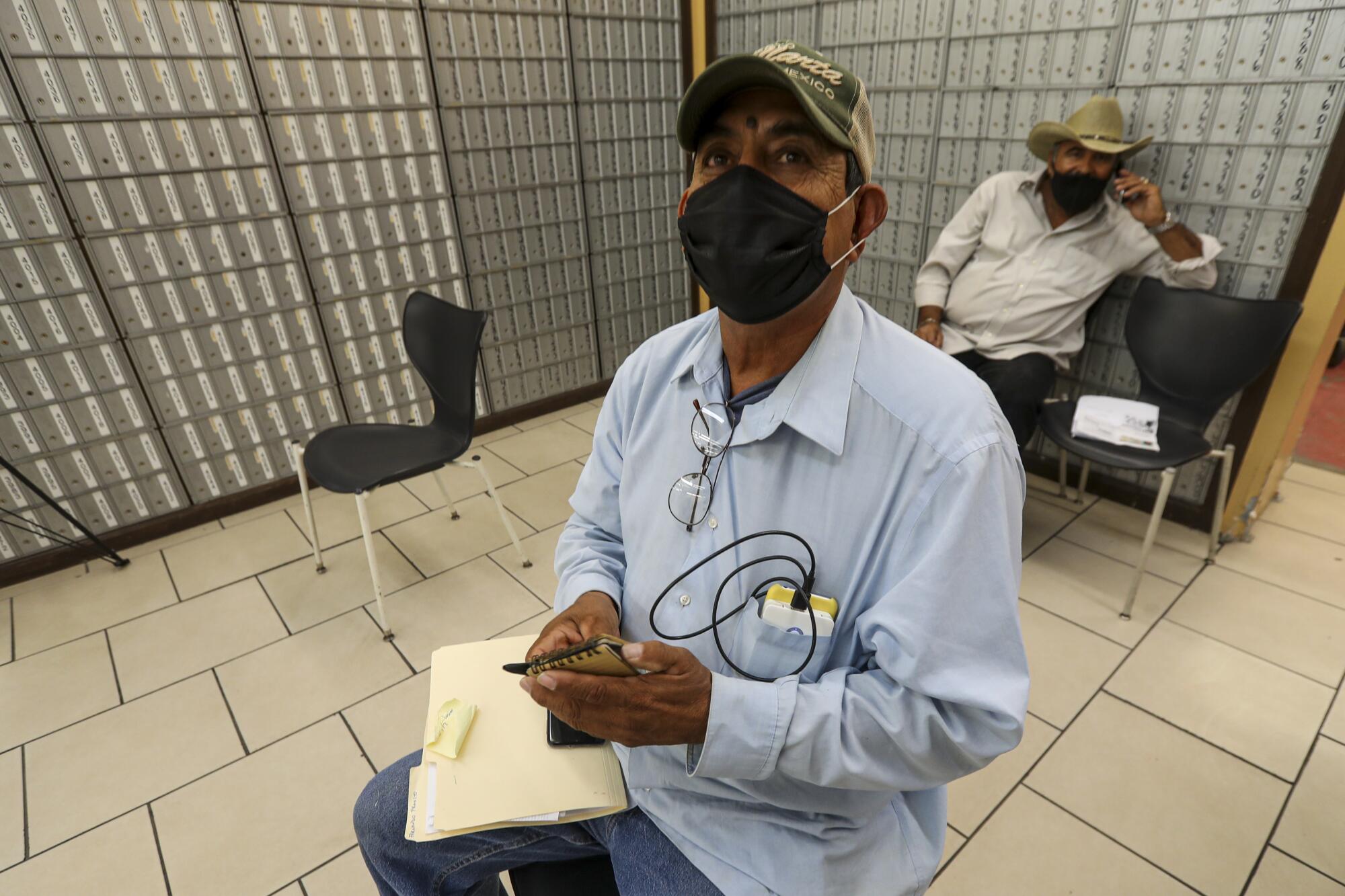
Bordered by Arizona to the east, Riverside County to the north, San Diego to the west and Mexico to the south, Imperial County is besieged by agricultural burning, toxic dust from the Salton Sea and fumes from the dozens of factories operating in Mexico.
There’s also the pollution from thousands of cars and commercial trucks idling at the border.
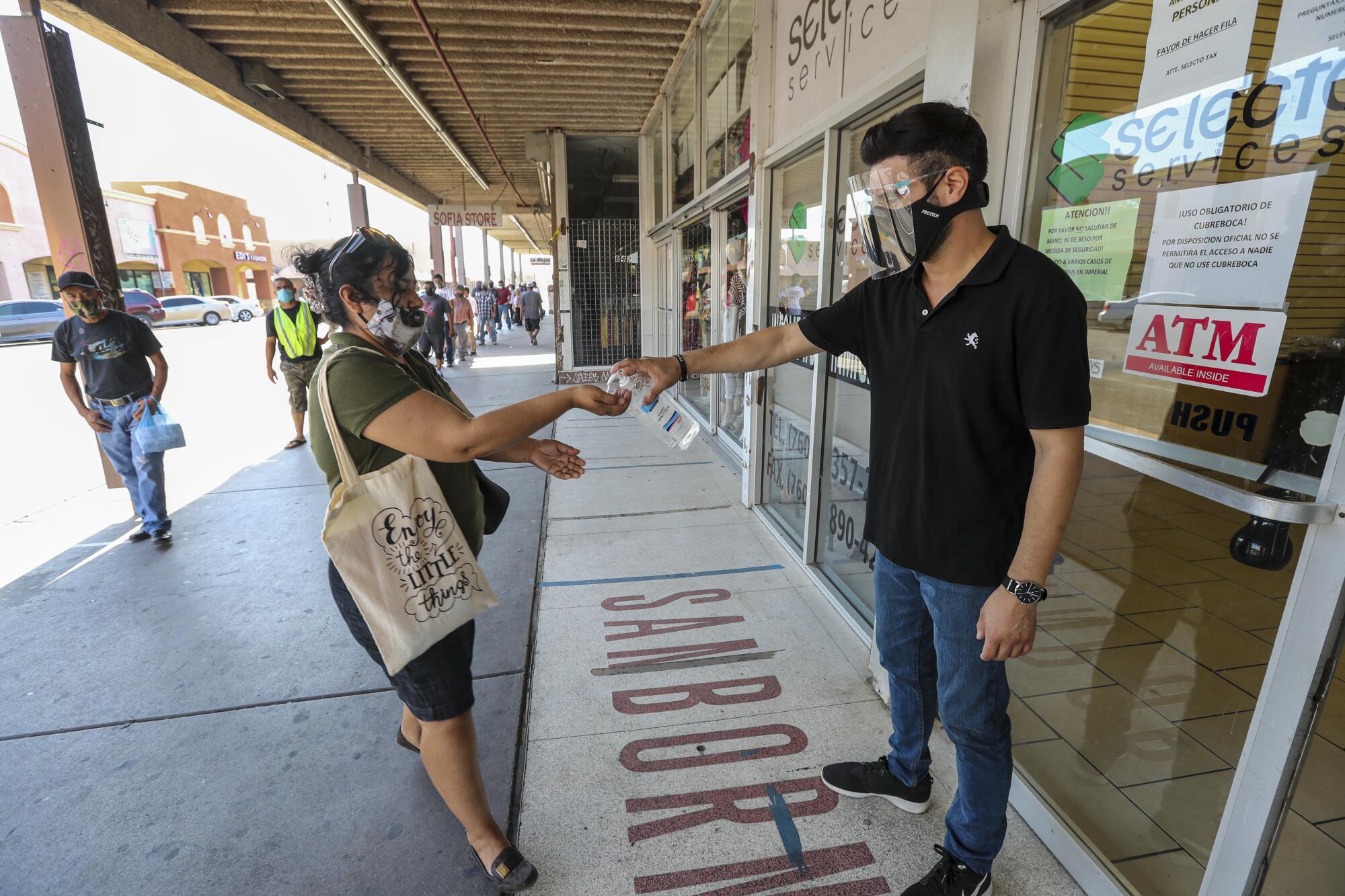
The Calexico West Port of Entry — one of two in the county — is the third-busiest land port in the state, processing about 20,000 northbound vehicles and 12,500 pedestrian crossings per day, according to the California Air Resources Board.
The region has high levels of air pollution that lead to or exacerbate respiratory conditions such as asthma, bronchitis and chronic obstructive pulmonary disease. All of those are risk factors for a disease that can leave people feeling like they’re drowning in the worst cases.
“We got people that are poor, unemployed, people who aren’t able to get fresh fruits and veggies, and so they’re eating a lot of stuff that’s making them obese and diabetic,” said Edward, the hospital executive. “When you add all that together, the body’s ability to fight an infection decreases.”
Addressing lawmakers during a hearing in June, Janette Angulo, director of the Imperial County Public Health Department, said that if there was a painful silver lining, it was that the pandemic was drawing attention to the region’s problems.
“Imperial County is a chronically disadvantaged, underserved and underfunded community,” she said. “It’s no secret that prior to this pandemic, the county was in dire need for resources. COVID-19 just came along to aggravate its situation.”
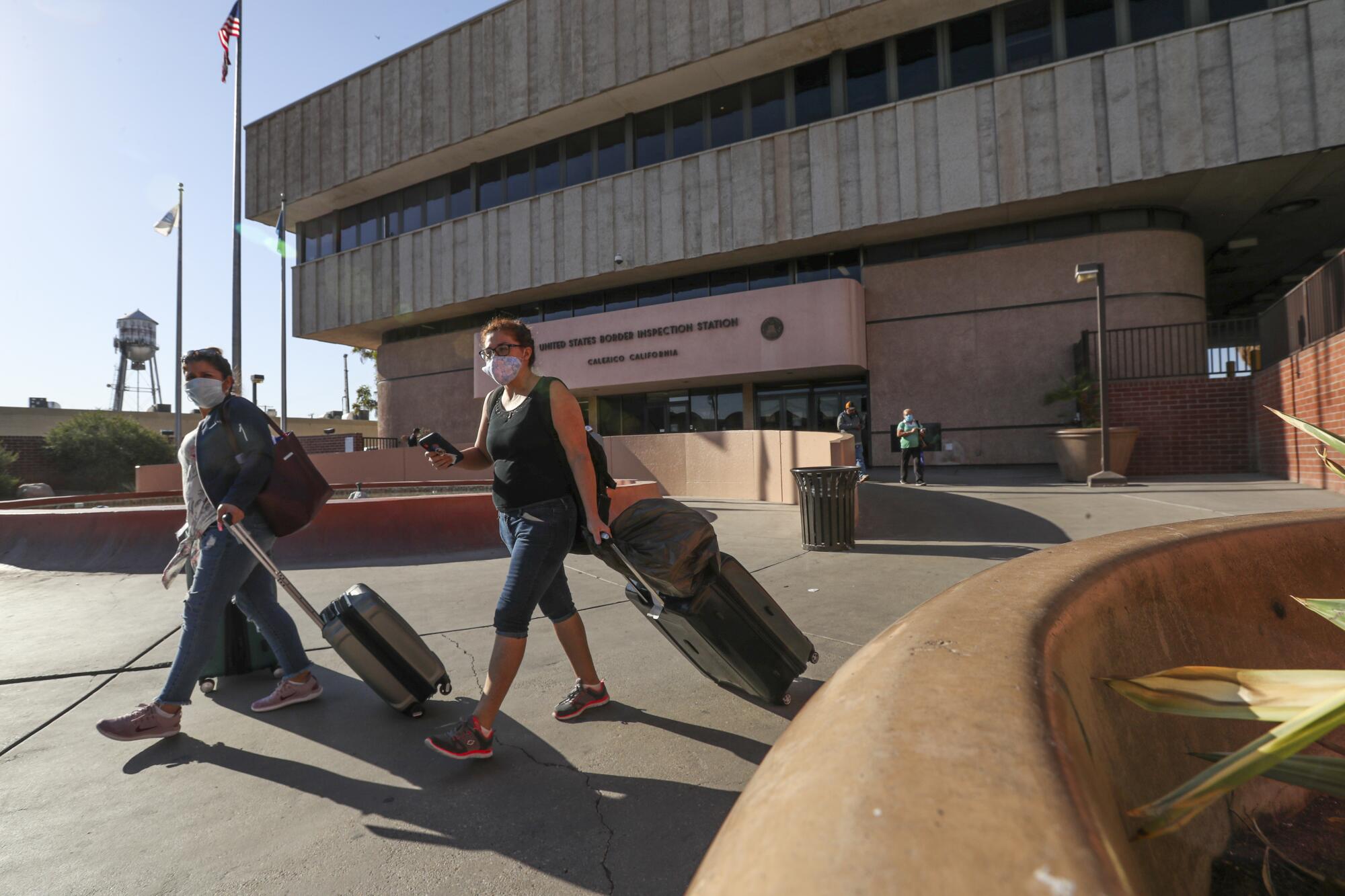
That much was visible in May when COVID-19 cases began to climb. Health experts say social gatherings had led to a surge. Late that month, Mexicali hospitals began to turn COVID-19 patients away, forcing U.S. citizens and green card holders to cross the border into Imperial County.
The influx began to overwhelm hospitals, forcing them to stabilize and transport COVID-19 patients out of the region. More than 40 of them were sent to Paradise Valley Hospital in National City.
“It used to be that your spouse went into the hospital and you could go visit. Now, all of that is gone.”
— Jennifer Saunders, director of emergency services at Paradise Valley Hospital
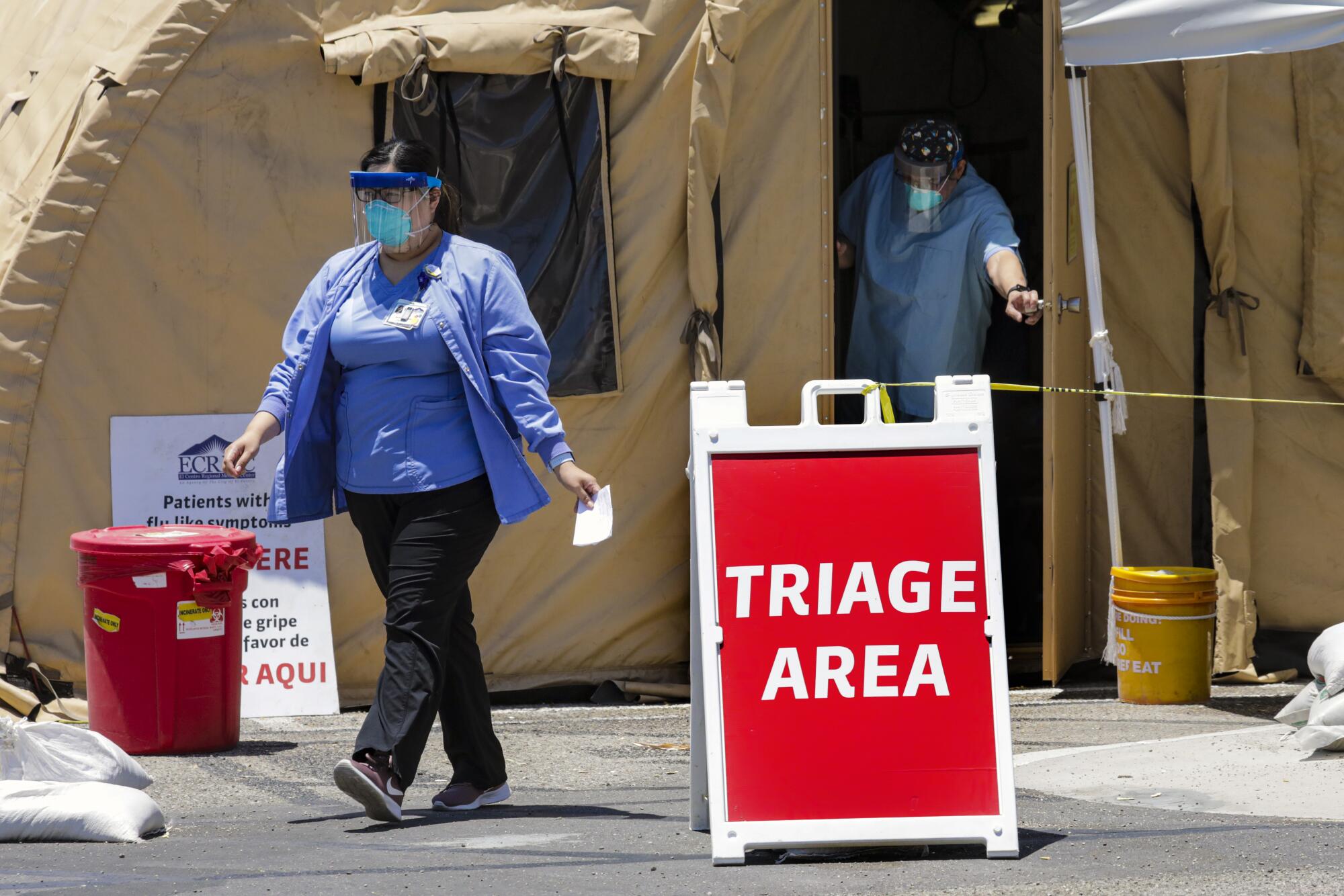
In a span of three days in mid-May, the hospital received about 20 patients from Imperial County. Many of them were critically ill and would require up to two months of care.
“It was like watching a storm coming in,” said Patricia Dobbs, a charge nurse at Paradise Valley.
“The floodgate had opened,” added Jennifer Saunders, director of emergency services at the hospital. “Everyone was very scared.”
The hospital was so busy with patient transfers that at times one ambulance helicopter would be circling above, in a holding pattern, while another was dropping off a patient.
Every two hours, state officials were calling for transfers and making sure medical charts had been received. Even residents were calling, asking why there were so many helicopter landings.
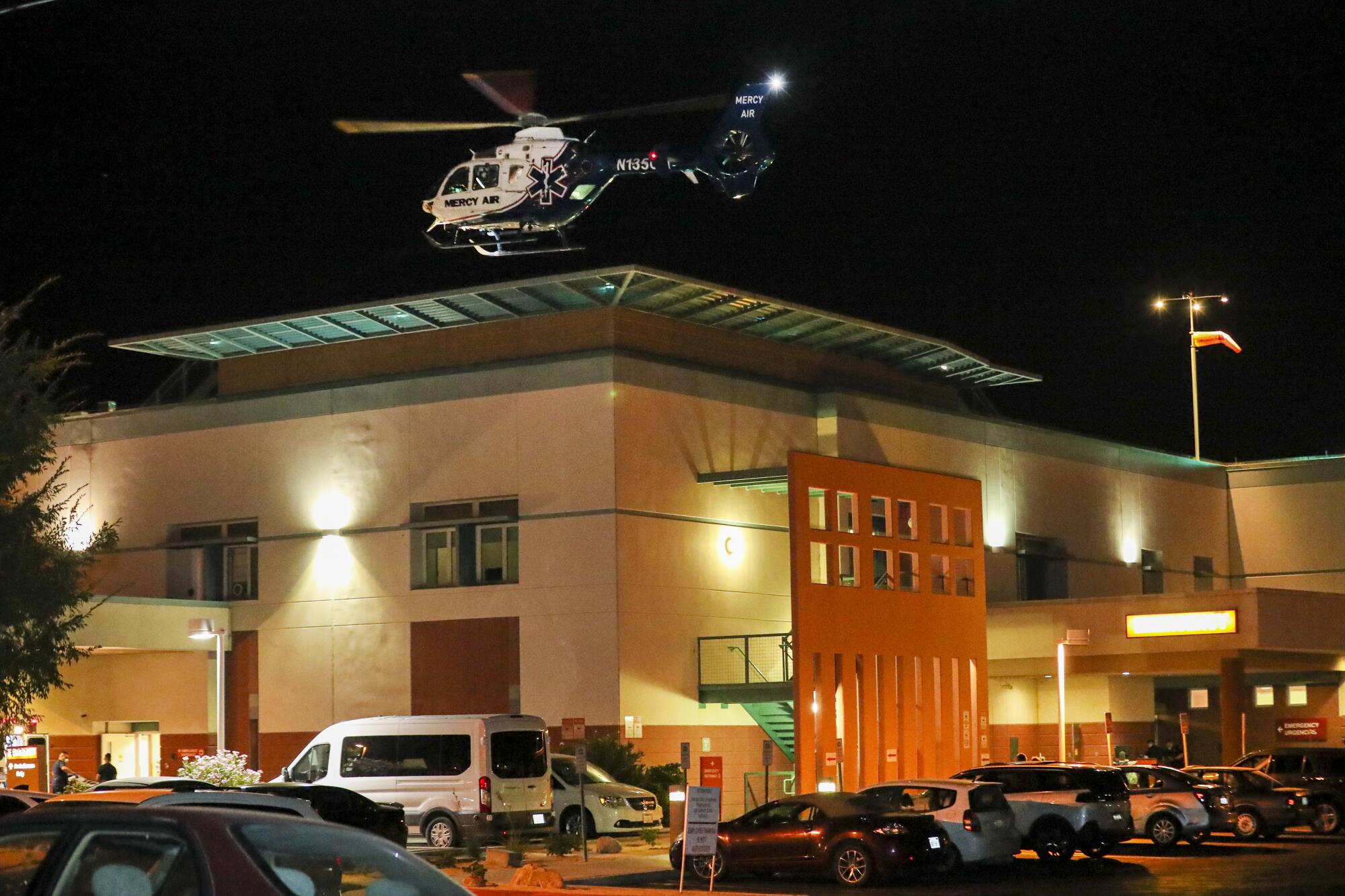
Saunders said because hospital visitations were not allowed, they used tablets to let families FaceTime each other.
“It’s heart-wrenching to know that a family member can go to the hospital and say goodbye to their family and not see them again for a month,” she said.
On the Fourth of July, Saunders got another call for help from El Centro Regional Medical Center. The Imperial County hospital needed to transfer patients. That included a married couple — the Lueras.
Saunders had already seen COVID-19’s ability to separate families; one man had family scattered in hospitals across California. Even hospital staff had been away from their own families.
“It used to be that your spouse went into the hospital and you could go visit,” she said. “Now, all of that is gone.”
If the hospital could keep the Lueras together, they would jump at the chance.

On July 5, the Lueras arrived by helicopters. They were placed in the ICU, just a room apart from one another, sedated and hooked up to ventilators.
Pedro Jr. counted himself lucky. In early June, the 37-year-old restaurant owner in El Centro said he had been infected with COVID-19.
He quarantined himself in a guest room at home for almost a month. He also told his parents not to visit. He said he got tested six times until one showed he had the infectious disease.
His wife, Aracely, 37, got tested on June 22. It took about 16 days for her to get her results: positive. Their 8- and 7-year-old sons and 4-month-old daughter have not shown symptoms of being infected.
Pedro Jr. said he’d rather have his mother and father healthy and at home. But knowing that his parents were together at least brought some peace of mind.
On July 17, his mother was moved out of the ICU. His father remains on a ventilator.
It was a bittersweet moment for Pedro Jr. Although his mother was doing better, there were other health complications she now had to take care of. And his father was still sick.
Still, he said, he remained hopeful that they would both make a full recovery: “I’m praying for that.”
More to Read
Sign up for Essential California
The most important California stories and recommendations in your inbox every morning.
You may occasionally receive promotional content from the Los Angeles Times.


